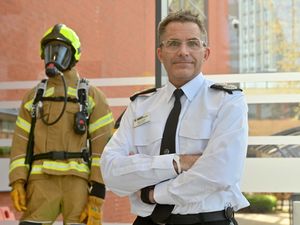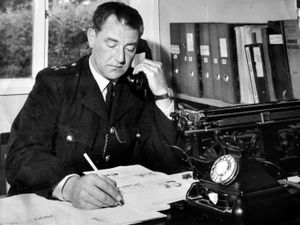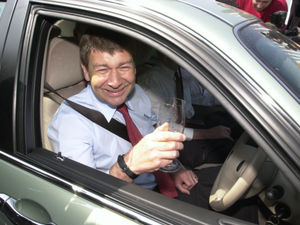Quiz: How much do you know about the Black Country?
Do you think you know the Black Country? Do you know your pepperpots from your diggem uppers, and what to do with a sad iron?
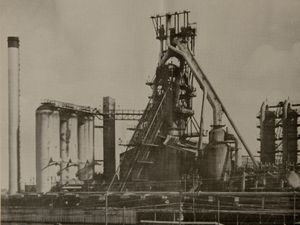
Well a new quiz book by historian Andrew Homer aims to sort the blokes from the babs with a series of fascinating and questions about the region.
Andrew, the former secretary of the Black Country Society, has produced a new book called A Question of the Black Country, which tackles 20 separate areas of the region's history.
Andrew, who has an MA in West Midland history, is following in the footsteps of his father, Winston Homer, who wrote a book So You Think You Know the Black Country? in the 1970s. But while his father's book was very much in the form of a traditional quiz, with short, factual answers, Andrew has tried to broaden the scope of his publication by explaining the stories behind the answers.
"I wanted mine to be as much a history book as a quiz book, so I have included both short answers and more detailed explanations," he says.
But while the 66-year-old former Dudley College lecturer provides more than 200 questions and answers about the region, there is one that he admits to not really knowing the answer to – what, and where the Black Country actually is.
"A surefire way to start an argument in the Black Country is to ask where its borders are," says Andrew, who lived in Sedgley before retiring to Devon two months ago.
"Nobody can agree on where its borders are, or indeed why it is called the Black Country.
"Even the Ordnance Survey in 2009, when they decided to name the area, stated officially that they were not going to draw a border around it, because nobody in the Black Country would agree where it should be. Instead they opted for simply placing the words Black Country between Dudley and West Bromwich."
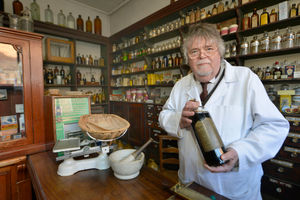
Andrew says the use of Black Country dialect, which traces its roots back to Anglo-Saxon English, is probably the best measure of where the boundaries lie.
"Where the dialect was or is still commonly spoken, there we have real Black Country," he says. In recent years, the local authorities of Dudley, Sandwell, Wolverhampton and Walsall have defined the Black Country as within their boundaries, and while Andrew says he considers these to fall within the Black Country, his book also includes references to Himley, Baggeridge, and Boscobel House, which all fall just outside.
"The thing is, if you exclude Stourbridge, you lose the Stourbridge Lion and the Agenoria. If you exclude Wolverhampton, you lose the big car manufacturers. So, as with my previous books, I include them, but explain why I have done so."
Andrew, who worked for the past seven years as a costumed guide at the Black Country Living Museum, says he has tried to strike a balance so that the questions will challenge most readers, without being so difficult they will be unable to answer any of them.
"I tested the questions on my daughter, who works as a teacher. She is 30, and grew up in the Black Country, she got about 30 per cent of them right. I also tried them out on a few people I knew who were experts on the Black Country.
"Also, working at the museum, I got a good idea of the sort of questions that people ask."
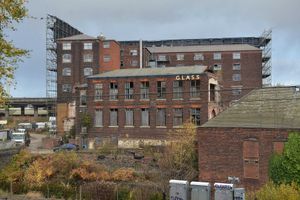
Some of the questions are widely known general knowledge, such as the Gornal legend about the pig on the wall, although Andrew points out that this story is not unique to the Black Country, and crops up in other parts of the country too. But others require specialist local knowledge, and only people who live in specific areas will be familiar with them. And while the 1916 bombing of Wednesbury by a Zeppelin captain who mistook the town for Coventry is well-documented, far fewer people will know the name of the film star whose uncle was responsible for the craft. Andrew hopes the book will leave Black Country people better informed about these details.
And if you fancy putting your knowledge to the test, here are 10 quiz questions about the Black Country.
What was the Pillar and Salt technique used for?
Birmingham-based Oscar Deutsch, founder of the Odeon Cinema chain, built his first cinema where?
What were Thomas Newcomen's first and subsequent atmospheric steam engines designed to do?
Which side destroyed St Edmund's Church in Dudley, known locally as 'bottom church', during the English Civil War?
Who suffered a major defeat in the year 910 at the Battle of Wednesfield, also known as the Battle of Tettenhall?
Why did sailors have reason to be thankful to Chance Brothers of Smethwick?
Which major brewery in Dudley was named after a mother and her sons?
What is Calymene blumenbachii better known as in the Black Country?
Many Walsall leather workers made high quality saddles but who made the metal items that make up a horse's harness?
The huge blast furnace at Bilston Steel Works had a girl's name, but what was it?
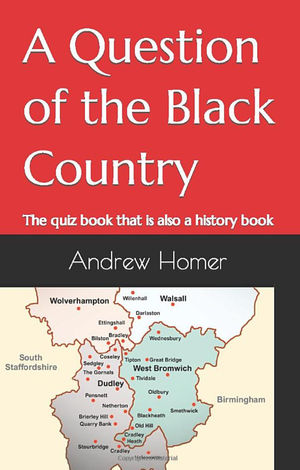
Answers
Mining. A series of stalls or rooms are dug out leaving pillars to support the roof. Where the coal seems and limestone layers were thick enough, this method of mining was often used in the Black Country.
Brierley Hill. The Picture House in Brierley Hill opened in 1928. Always abreast of new technology, he converted it from silent to sound in 1930 in order to show the new 'talking pictures'. The Odeon name may never have come about as Oscar Deutsch had planned another Picture House for Perry Barr, but there was another cinema with the same name. Fellow investor Mel Minelsonn had seen the name Odeon in Tunisia, which coincidentally contained Oscar's initials. The Odeon name would later acquire the acronym Oscar Deutsch Entertains Our Nation.
Pump water out of mines. Flooding in mines was a national problem, but especially here in the Black Country. Prior to Newcomen's success with his atmospheric steam engine, various methods of expelling the water from deep underground had all proved largely ineffective. Newcomen's engines could reliably remove about 120 gallons per minute.
The Royalists. In April to May 1646 a second English Civil War siege took place at Dudley Castle. The castle was a Royalist stronghold and Colonel Leveson, the commander, seemed determined to hold out against the Parliamentarian forces under Sir William Brereton. To this end, Leveson had buildings around the castle destroyed, including the church, in order to avoid them being used by the enemy. In the event, Dudley Castle was surrendered without a fight on May 13, 1646. The church was rebuilt in 1724.
The Vikings. A major battle between the Anglo-Saxons and the Vikings took place in the year 910. Opinions vary as to exactly where this occurred, which is why it is known as both the Battle of Wednesfield (Wodensfield) and the Battle of Tettenhall. The actual battle may have been fought somewhere between. Mercians and West Saxons dealt a decisive blow against the Northumbrian Vikings. Following this battle, Vikings would never again pose a serious threat to Mercia and England would soon unite under one monarch.
Lighthouses. Chance Brothers of Smethwick supplied the glass for the Crystal Palace of London, which housed the Great Exhibition of 1851. At the exhibition, it demonstrated a radical new design for lighthouse lenses, devised by James Timmins Chance. This was to prove so successful that Chance built a new lighthouse works in order to satisfy the worldwide demand.
Julia Hanson and Sons Ltd. The brewery was started by Julia Hanson after first founding a wines and spirits business in 1847. Julia started brewing a mild beer which proved popular and by the time she died in 1894, her sons Thomas and William were involved in the business. They acquired the Peacock Brewery in High Street, Dudley, and having a new brewery built, registered the company as Julia Hanson and Sons Ltd in 1902.
The Dudley Bug. The abundance of limestone in the Black Country in areas such as Wren's Nest makes this one of the world's most important sites for fossils. One of the most common was the Trilobite Clymene blumenbachii, nicknamed the Dudley Bug, sometimes called the Dudley Locust.
The loriners. Loriners arrived in the Walsall area for much the same reasons as the industry flourished in other parts of the Black Country. They needed the mineral resources which were in plentiful supply to be able to manufacture the metal parts of a horse's harness, which is known as lorinery. Once loriners established themselves, it made sense for leather workers and particularly saddle makers to follow suit.
Elisabeth. In 1920, Stewarts and Lloyds took over Bilston Steel Works from the Hickman family who had acquired it in 1866. In 1954, a new blast furnace replaced three existing ones, and became affectionately known as Elisabeth after the daughter of the company chairman. Elisabeth was the last remaining blast furnace in the Black Country, and was demolished in 1980.

